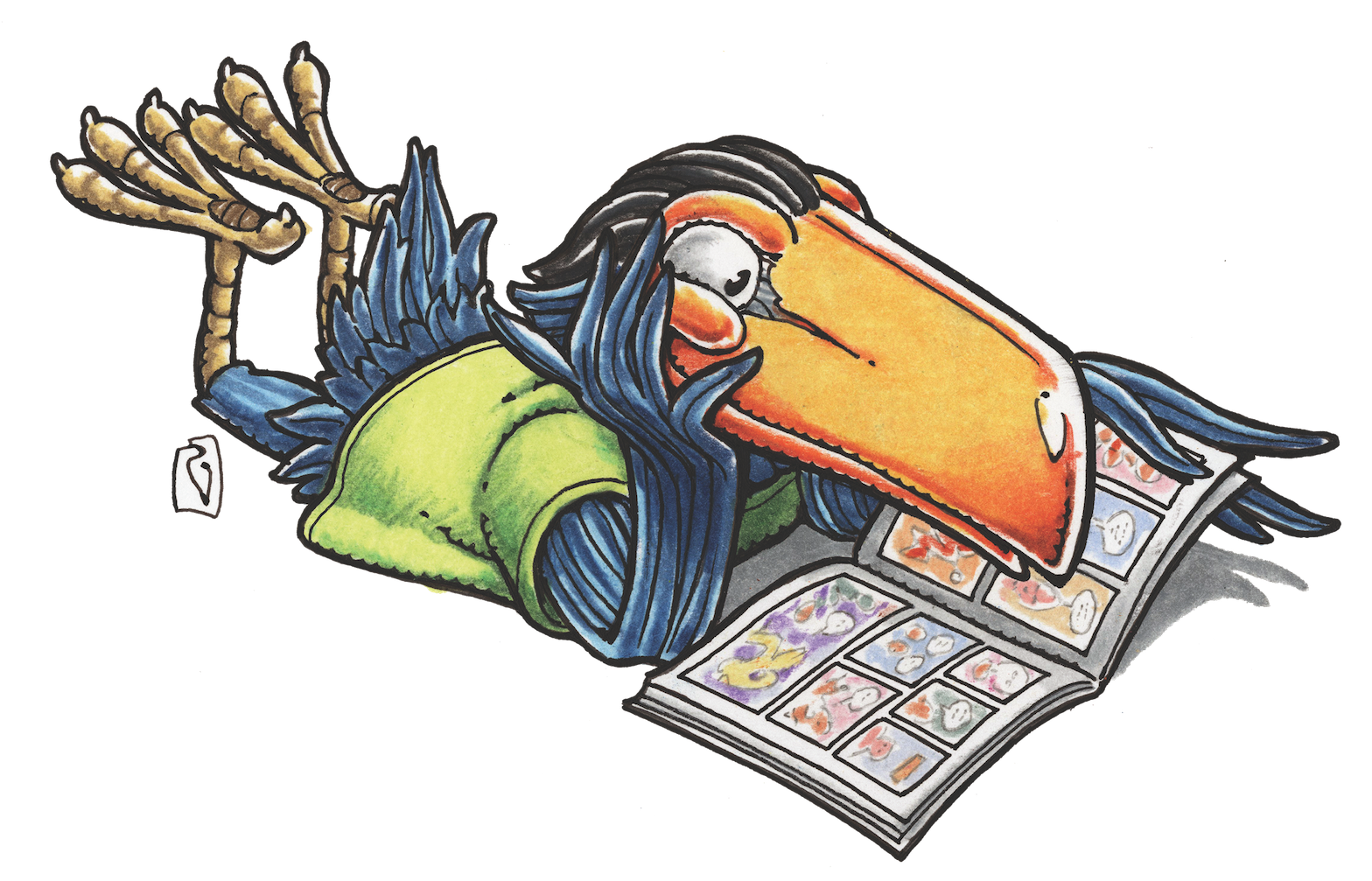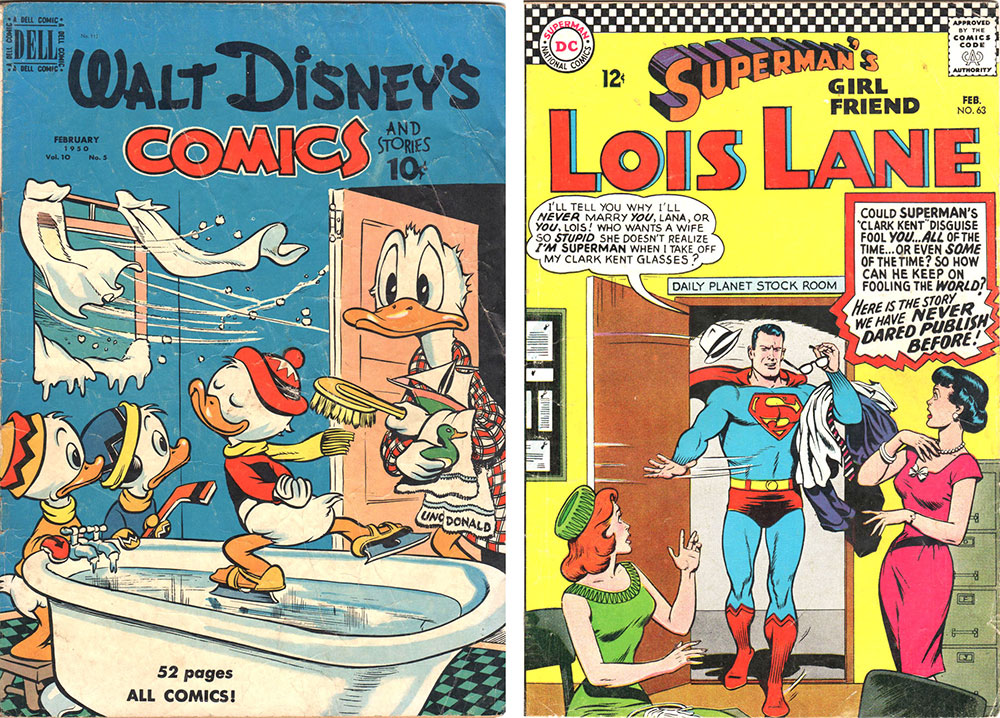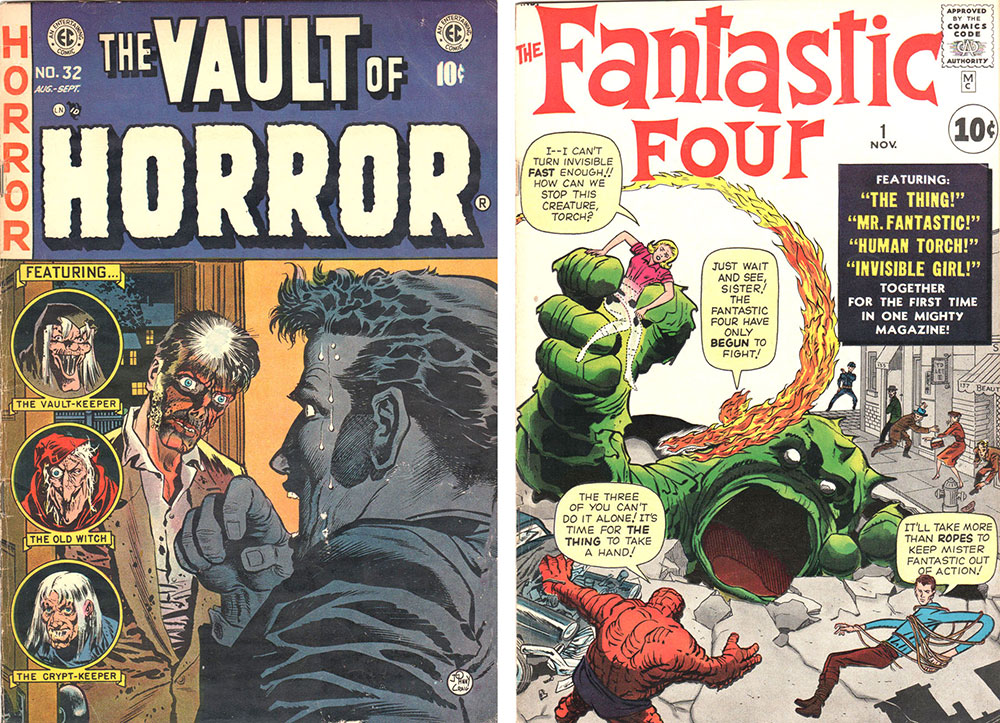MAGGIE’S WORLD BY MAGGIE THOMPSON
Maggie’s World 068: Covers

In Maggie’s World #29 in 2015, I griped about “an increasing emphasis on covers over contents” among collectors.
It’s time to revisit that 2015 post. I wrote, “An entire essay could be (and has been, I’m sure) devoted to the challenges of creating a comic book cover. The issue has to be easy to differentiate from the preceding issue while maintaining enough of a consistent trade dress to let the casual shopper notice it immediately. And so on.”
Well, yes. “And so on.”
What about covers?
Since it’s the first thing people see when they look at a comics rack, a cover is designed to sell the issue.
Some covers represent the contents in a general way with a freestanding image. Some are more specific, illustrating interior story elements.

Their impact and design elements make them among the top price-getters when it comes to collecting original art. For example, Heritage Auctions information says that Barry Windsor-Smith’s original art for a story page for Marvel’s historic Conan #1 sold in 2016 for $11,950. But his (yes, stunning) cover for #4 sold in 2013 for $87,235. Never mind that cover art is likely to have added material that can degrade more than the image on a simple inked page. (I have a terrific never-used cover—terrific except that it has a number of little images that were rubber-cemented onto the art: images that are now falling off the art. And I can’t figure out how best to repair it with some sort of acid-free adhesive. But I digress.)
When people post an image with reference to a specific issue, chances are that it’s the cover image they’ll show.
Because, I’m thinking, the cover art was created to be captivating: stunning even at a distance.
Cover collecting
An entire focus of comics collectors has been on covers—to the point at which such covers used to be noted in “for sale” ads: Atom-bomb cover! Good Girl Art cover! Bondage cover! (I detect a theme in itself.) Probably my favorite “for sale” ad was from Smilin’ Ed Comics, designed by Raoul Vezina. It ran in Buyer’s Guide for Comic Fandom and was a full page of “Good Dog Comics” for sale. (Pluto on a leash was a “Dog Bondage” cover.)
I finally gave up the right to sneer at such goings-on when I realized that I had to buy all the Walmart special DVD versions that featured variant Deadpool packaging. Sigh …

Captivating images
Some of the most successful covers are the ones focused on the design that has the greatest impact. Consider DC’s Action Comics #1. Or Fawcett’s Captain Marvel Jr. #1. They are classic.
There are situational teases. Consider Timely’s Marvel Comics #1. Or E.C.’s Weird Science-Fantasy #29.
There are also covers designed to function as stand-alone gag cartoons. Consider most of the covers of Dell’s Marge’s Little Lulu. Or Marvel’s Sergio Aragonés Groo the Wanderer. Or DC’s Sugar and Spike. Or E.C.’s Mad. Or …
Dressing up
In 2015, I referred to “trade dress.” It identifies an entire line of entertainment. One of the champs in the 1950s was E.C., which provided a clear publisher logo and connection to readers. The logo was so clear that the publisher provided an “E.C.” pin to members of its E.C. Fan Addict “club.”
Hey, remember DC’s “Go-Go Checks”? They were intended to convey general “hip”ness in 1966 and 1967, and it was hard to miss them, no matter how a local newsstand shelved its comics.
And, of course, variants
Back In The Day, they were used to test buyer reactions in specific markets (and kept as much of a secret as possible). Marvel’s Star Wars #1 (July 1977) tested a 35-cent price in addition to its standard 30-cent release. That added nickel was an investment that paid off for those who paid it. (At auction, the 35-center can bring $20,000 and more; the 30-center usually goes for $25 or less.)
Variant attention really kicked off with the marketing of the two John Byrne covers for DC’s The Man of Steel #1 (October 1986).
Then, variants came to the rescue when DC found itself with a problem. The direct market (through which comics shops ordered their stock) depended on shops’ orders in advance of publication. Shop owners had to predict customer interest and then order copies that couldn’t be returned for credit in the way that newsstand sellers could. And a new DC Batman title received such high advance non-returnable orders that comics shop sell-through wasn’t likely to support them. What to do? Hey, how about different colors on the same cover? So it came about that Legends of the Dark Knight #1 (November 1989) was given a blue cover. And a pink cover. And an orange cover. And a yellow cover.
And completists had to have one of each.
A tip of the Thompson topper, though, must go to DC’s Justice League of America #1 (April 2013), with the JLA raising a flag on the cover. Or, rather, a different flag for each of the 50 states, the District of Columbia, and other venues.
Don’t forget the fancy gimmicks
Hologram. Fifth ink. Die-cutting. Blank.
Perhaps the prize should go to the 2013 Marvel Deadpool series, issue #27 (June 2014)—or, as the cover itself announced, “The most important Issue #27 in the History of Comics!” What was noteworthy? Again—as trumpeted on the cover—it was the Guinness World Records Record Holder for the most comics characters on the cover of a single issue: 224 (not counting the dozen real people—creators and editors—also pictured).
By the way …
There’s an annual Eisner Award for the best comic book cover artist of work published in the preceding year. Looking at the last decade, these went to:
- 2009 James Jean, Fables (Vertigo/DC); The Umbrella Academy (Dark Horse)
- 2010 J.H. Williams III, Detective Comics (DC)
- 2011 Mike Mignola, Hellboy, Baltimore: The Plague Ships (Dark Horse)
- 2012 Francesco Francavilla, Black Panther (Marvel); Lone Ranger, Lone Ranger/Zorro, Dark Shadows, Warlord of Mars (Dynamite); Archie Meets Kiss (Archie)
- 2013 David Aja, Hawkeye (Marvel)
- 2014 David Aja, Hawkeye (Marvel)
- 2015 Darwyn Cooke, “Darwyn Cooke Month” variant covers (DC)
- 2016 David Aja, Hawkeye, Karnak, Scarlet Witch (Marvel)
- 2017 Fiona Staples, Saga (Image)
- 2018 Sana Takeda, Monstress (Image)
Next time you’re picking up your comics from the shop, take a look at all the images on the racks. Do any covers tempt you to add issues to your planned purchases? Just a thought …
Maggie’s World by Maggie Thompson appears the first Tuesday of every month here on Toucan!